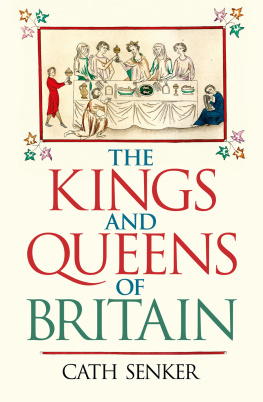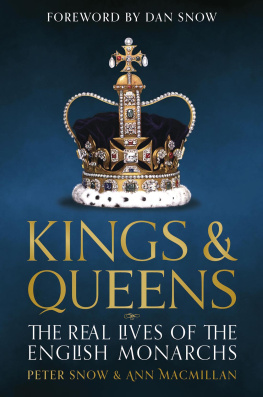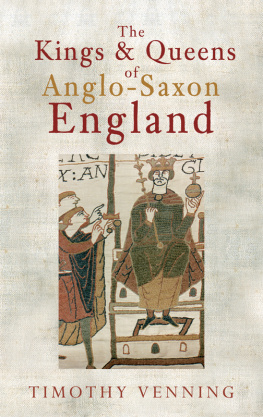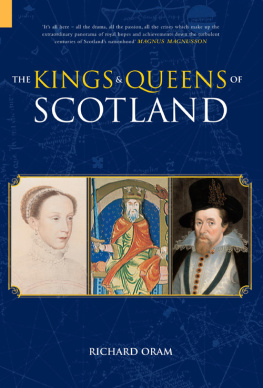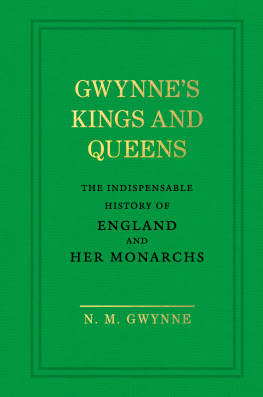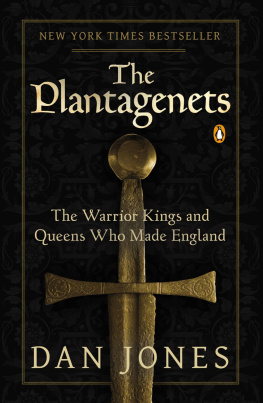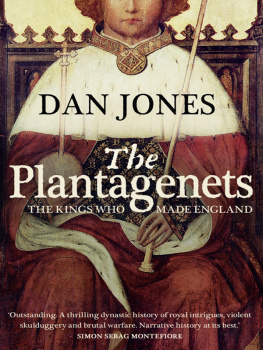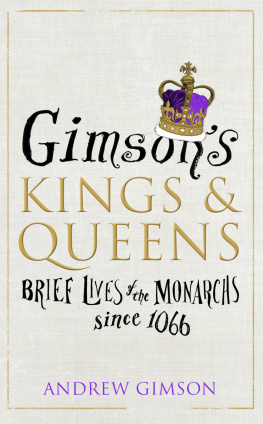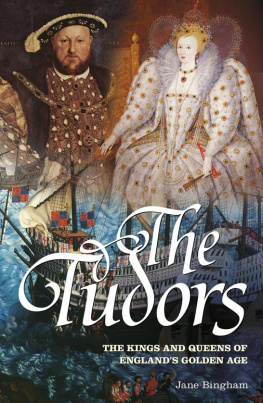Claire Ridgway - Illustrated Kings and Queens of England
Here you can read online Claire Ridgway - Illustrated Kings and Queens of England full text of the book (entire story) in english for free. Download pdf and epub, get meaning, cover and reviews about this ebook. year: 2014, publisher: MadeGlobal Publishing, genre: Non-fiction. Description of the work, (preface) as well as reviews are available. Best literature library LitArk.com created for fans of good reading and offers a wide selection of genres:
Romance novel
Science fiction
Adventure
Detective
Science
History
Home and family
Prose
Art
Politics
Computer
Non-fiction
Religion
Business
Children
Humor
Choose a favorite category and find really read worthwhile books. Enjoy immersion in the world of imagination, feel the emotions of the characters or learn something new for yourself, make an fascinating discovery.

- Book:Illustrated Kings and Queens of England
- Author:
- Publisher:MadeGlobal Publishing
- Genre:
- Year:2014
- Rating:4 / 5
- Favourites:Add to favourites
- Your mark:
- 80
- 1
- 2
- 3
- 4
- 5
Illustrated Kings and Queens of England: summary, description and annotation
We offer to read an annotation, description, summary or preface (depends on what the author of the book "Illustrated Kings and Queens of England" wrote himself). If you haven't found the necessary information about the book — write in the comments, we will try to find it.
Illustrated Kings and Queens of England — read online for free the complete book (whole text) full work
Below is the text of the book, divided by pages. System saving the place of the last page read, allows you to conveniently read the book "Illustrated Kings and Queens of England" online for free, without having to search again every time where you left off. Put a bookmark, and you can go to the page where you finished reading at any time.
Font size:
Interval:
Bookmark:
Illustrated
Kings and Queens of England
To my friend Mnica.
Verity
To my father, Geoff, and in loving memory of my mother Margaret.
Tim
For my parents, Frank and Davida, with love.
Claire
and
Queens of England
Copyright 2014
MadeGlobal Publishing
Kindle Version
All rights reserved. No part of this publication may be reproduced, stored in a retrieval system, or transmitted, in any form or by any means, electronic, mechanical, photocopying, recording or otherwise, except as permitted by the UK Copyright, Designs and Patents Act 1988, without the prior permission of the publisher.
M
MadeGlobal Publishing
For more information on
MadeGlobal Publishing, visit our website:
www.madeglobal.com
As a self-confessed royalist, it is my great pleasure to introduce you to the kings and queens who have all had a hand in making the United Kingdom what it is today. I could, of course, write a Bible-sized book about these monarchs, but I have chosen instead to give you a taster of their lives and reigns.
English history is full of characters whod make ideal protagonists in block-buster novels - larger-than-life characters with soap opera style lives, swash-buckling warriors, saints, mad monarchs, virgin queens, religious zealots, regicides, alleged prince killers, Lotharios, romantic heroes, cake burners and tide-turners, monarchs with strange nicknames (Longshanks, the Unready, Ironside etc.), executed kings and tyrants - and thats just a few of them! It is hard to believe that some of them ever managed to lead a country or control governments and armies, while others had reigns that are known as Golden Ages for their advancements.
You will notice that the first monarch I introduce you to is Alfred the Great. He was not the first monarch of England, by any stretch of the imagination, but he was the first to claim to be King of the English, or King of the Anglo-Saxons.
When I found antique copies of John Cassells volumes of Illustrated History of England I decided that his beautiful 19th century engravings should be shared for future generations to enjoy. Bringing these old images to life by adding colour became a bit of a family project and I was excited to get my daughter Verity involved great for indoctrinating her with some history too! I believe that we have done justice to Cassells original work.
I do hope you enjoy this journey through English history, I certainly enjoyed re-visiting the stories of these people.

Claire Ridgway
Lucar, Spain
November 2014
Britain was created in around 6100 BC, when a tsunami caused it to break free from continental Europe and become separated by what we know today as the English Channel. At that time, Britain was home to tribes of hunter-gatherers who had travelled there following food sources like reindeer and mammoth as they migrated.
Somewhere between 5000 and 4000 BC, farming was introduced to Britain, heralding the start of the New Stone Age or Neolithic Era. The Bronze Age began in around 2500 BC, when the Beaker People settled on the island and began making things from copper, gold and then bronze. In 750 BC, iron was introduced into Britain and started to replace bronze as the material used for tools and weapons. The people who worked with iron were the Celts, who were mainly farmers and who lived in groups and tribes ruled over by a king or queen.
The Romans were Britains first invaders, crossing the English Channel in 43 AD and making Britain part of their empire. The Romans settled and lived in Britain until around 410 AD. They gave Britain its Roman roads, Roman baths, forts, the city of Londinium (London) and Hadrians Wall. When the Romans left Britain, the Angles, Saxons and Jutes (known collectively as the Anglo-Saxons) invaded Britain by boat from Germany, Denmark and Holland. The Anglo-Saxons divided Britain into kingdoms but were never able to conquer Cornwall, Wales and Scotland. Notable Anglo-Saxon kings include Aethelbert of Kent (c.560-616), who was the first Anglo-Saxon king to embrace Christianity, which had been brought to Britain by St Augustine in 597 AD; Eadwin of Northumbria (c. 586-c. 633), who was the first Christian king in the north of England; and Offa, King of Mercia, who ruled from 757-796, and whose dominance of England spread all the way up to the Humber and east to the border with Wales, where he built Offas Dyke.
In 793, the Vikings (or Norsemen) began their invasion of Britain from their homelands of Sweden, Denmark and Norway. Their first attacks were in Dorset and then on the monastery islands of Lindisfarne, just off the coast of Northumberland, and Iona, off the Scottish coast. In 829, Wessex became the most powerful kingdom in England, after King Egbert conquered Mercia and Northumbria, and in 843 the kingdom of Scotland was formed when the Pictish and Gaelic crowns merged. In 866, the Vikings launched attacks on northern England and East Anglia, and in 867 they captured York and made it their capital, naming it Jorvik. By 870 the Vikings had defeated the kings of Northumbria, East Anglia and Mercia, and so decided to attack Wessex, the only remaining Anglo-Saxon kingdom, ruled by King Aethelred. The Vikings defeated Aethelreds forces at the Battle of Reading, but Aethelred was victorious at the Battle of Ashdown. Unfortunately, this victory was followed by a series of defeats and Aethelred died on 23 April 871, leaving Wessex in the hands of his brother, Alfred.

Rule: 871-899
Marriages: Ealhswith
Issue: Aethelflaed Lady of the Mercians
Edward
Aethelgifu, Abbess of Shaftesbury
Aethelweard
Aelfthryth Countess of Flanders.
Alfred was born in Wantage, Oxfordshire, and was the fifth and youngest son of Aethelwulf, King of Wessex, and his first wife, Osburh. Alfreds brothers Aethelstan, Aethelbald, Aethelbert and Aethelred all ruled Wessex before him, with the crown passing from brother to brother, rather than to their sons. He inherited the throne of Wessex on Aethelreds death on 23 April 871 and was the first king to call himself King of the Anglo-Saxons, or English.
Although things looked bad at first for Alfred and Wessex, with the people of Wessex being forced to flee or surrender, and an attack on Chippenham forcing Alfred himself to withdraw into the Somerset marshes, Alfred was able to turn things around. He and his army defeated the Vikings at the Battle of Edington in May 878. Alfred then pursued the enemy to their stronghold in Chippenham, besieging their fortress. The siege ended after two weeks, when the starving Vikings surrendered and their leader, Guthrum, agreed to leave Wessex and convert to Christianity. Peace treaties between the two leaders saw England being divided up the Vikings would rule northern and eastern England, and Alfred was to add West Mercia and Kent to his territories.
To protect his kingdom from any future threat, Alfred encouraged the building of burhs, or fortified towns, so that locals could man these defences in times of trouble. He was also responsible for creating a new and improved navy to fend off Viking invasions, and an army that worked on a rota basis. Alfred was also keen on reform, working hard to promote literacy by establishing schools and bringing law to his people.
Font size:
Interval:
Bookmark:
Similar books «Illustrated Kings and Queens of England»
Look at similar books to Illustrated Kings and Queens of England. We have selected literature similar in name and meaning in the hope of providing readers with more options to find new, interesting, not yet read works.
Discussion, reviews of the book Illustrated Kings and Queens of England and just readers' own opinions. Leave your comments, write what you think about the work, its meaning or the main characters. Specify what exactly you liked and what you didn't like, and why you think so.

